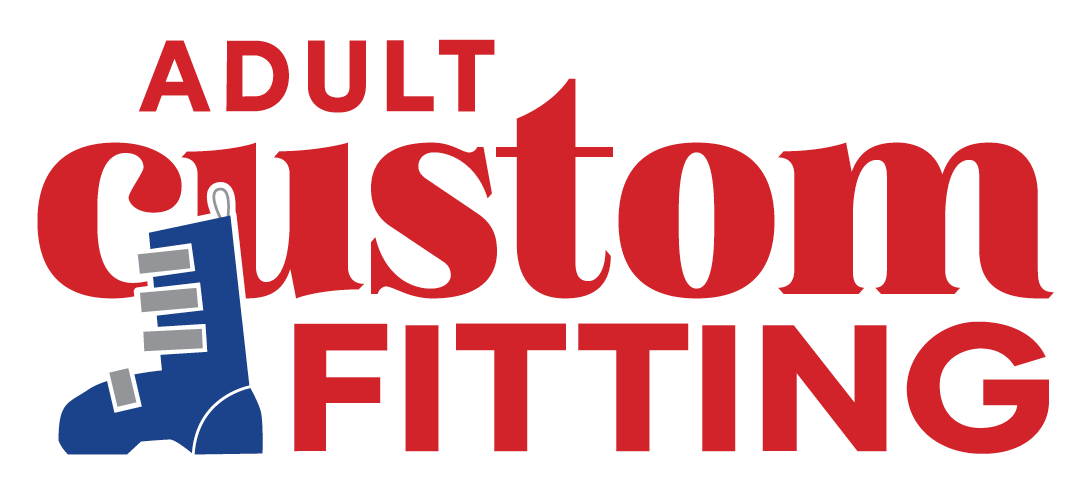

• Plan on 45 minutes per appointment
• A custom fitting requires clean ski socks in hand (not on feet) or you'll be asked to purchase a pair. Try-on socks not available & cotton or soccer socks do not allow for a proper boot fitting
• Walk-ins welcome, but not guaranteed as appointments take priority
Don't forget to bring your clean ski socks or buy a pair in store!!!

SKI HAUS and NOTB guarantees the fit of any boot we sell, in the recommended size, for a full year.
What is guaranteed?
First, we guarantee that you’ll probably feel some discomfort the first couple of times out, so we ask that you follow these simple instructions:
1. We suggest that the user wear the boots, around the house, for a minimum of two (2) times for approximately two (2) hours at a time before skiing. This will tell us if there are any problems that are too severe to be worked out. At this time the boot may be swapped for a comparably priced boot.
2. If you are experiencing extreme discomfort after you have skied the boot, rest your feet a few days. If your feet are still sore, you will feel the pain; even if the problem is solved.
Come in (bring your sales slip with you) and let us have a look at them. It is amazing what a pad or two in the right place will do to make a boot feel better. Once you ski the boot, you own the boot, but you don’t own the fit.
3. Repeat step 2 as often as necessary. Your boots will be with you for many years, so take the time now to make them work for you long term.
Ski boots are necessarily rigid pieces of plastic shell with thin anatomically shaped liners
that need to be tweaked to fit your foot properly. We are here to do the tweaking. The first year you own your boots, this service is free. Consider this first year an investment
in many years of enjoyable skiing.
We guarantee it!
Ski Haus and NOTB Family

AN OUTLINE OF THE 6 STEPS IN
CUSTOM FITTING PROCESS
1. Analysis – We will measure your unweighted feet, including length, width, instep, arch length and height, as well as take a look at the shaft of your leg and how it integrates to your foot. We will ask you to stand. Here we will look for pronation as well as have you flex your knees back and forth while we assess your range of motion.
2. Insoles – the role of the insole in side a ski boot is about proprioception, balance, and making the foot become dynamic in the shell. Based on our prior evaluation, we will recommend you replace the stock filler with either an off-the-rack footbed or, if needed, a custom insole designed to even better enhance your skiing experience.
3. Socks – Socks are an integral component to breathability, comfort, warmth, and performance. After sizing the boot, we will recommend an appropriate sock to enhance your fit, performance, and skiing experience.
4. Ski Boots – The length of the sole of a ski boot is something we can’t change so naturally, we will look at the way your foot fits into the ski boot. The shells don’t lie so we look at internal length, width, and volume of your feet while in the plastic shell. We will ask you to do the following movements while we evaluate the overall fit:
a. Place your foot to the front of the shell with your toes brushing. Ideally, we like to see 1.5-2 finger widths between the heel and back of the shell (less for a performance fit). This accommodates the space needed for the liner, insole, and a sock.
b. To evaluate volume, we will ask you to stand with you heel at the back of the boot. Then be prepared to stand and move the front of your foot side to side inside
the shell. These movements allow us to evaluate the space in the medial and lateral components of the boot.
c. With your foot still in the boot, we will look inside the boot over your instep to assure you have enough room.
d. Cuff Alignment – The purpose of the cuff alignment is to create a relationship between you and your boot that helps get the ski on edge faster and more efficiently. At this point in the process, we will look at you in your boots to make sure the cuff of the boot matches your lower leg. Quick and easy, but makes a huge difference.
5. Heat – It’s not just for cold feet. Adding a heat component to your boot improves circulation. Performance, mobility, and comfort. By now we know your feet inside and out so recommending the perfect heating element is a no brainer. Warm feet = better balance. When the smaller muscles in your feet lose their feel, the bigger muscles in your body take over causing quicker fatigue.
6. Accessories – Take care of your new gear. Boot dryers make them feel like new every time you put them on. Something to protect the soles if you walk in them frequently will make them last longer.
7. Custom Work – After skiing in your new boots, issues may arise. We are here for you! If you went through the process with us and purchased a boot in the size we recommended, any custom work for the first season is free. Ski boots are a piece of plastic, shaped a certain way. Liners are hand sewn around a last of a foot. After skiing half a dozen days, if you are having issues with the fit of your boot, we will make the adjustments needed to enhance the comfort and performance.